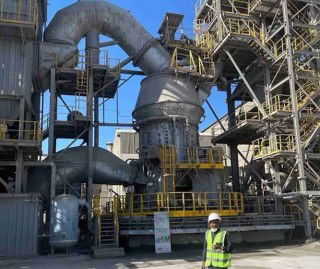Holcim Indonesia recorded a decline in sales revenue of five per cent to IDR2.25trn in the first three months of the year, as volumes were down by seven per cent, reflecting the contraction in domestic demand over the period.
Net income dropped to IDR32.7bn (US$2.5m) in the January-March period from IDR323.6bn in
the same quarter last year.
National demand for cement fell to 13.9Mt compared to four per cent growth (or 14.3Mt) over the first quarter last year. In addition, at the request of government, state-owned cement producers adjusted prices down by IDR3000 per bag impacting the whole industry, Holcim Indonesia highlighted. "Unfortunately, this intervention, while impacting market prices in general, has failed to stimulate any recovery in demand thus far," the company said.
Costs over the same period escalated, reflecting both rising energy, labour and raw materials prices in general, and higher capacity from the recent expansion in manufacturing facilities at Holcim Indonesia. The company said that raw materials costs were 30 per cent higher, labour costs were up by 27 per cent and electricity costs have risen steadily through 2014 by over 60 per cent. These trends were reflected in a 23 per cent reduction in the level of gross profit from IDR689bn to IDR533bn.
As competition in a softer market led to lower sales volume, distribution and selling costs over the first quarter were broadly unchanged, in addition to general and administrative costs crept higher due to some administrative project work. The increase in debt to fund equipment and construction for the Tuban project was evident in higher finance expenses, up 23 per cent to IDR100bn. Net profit for the quarter was IDR33bn compared to IDR323bn in 2014.
In announcing the first quarter unaudited result, Kent Carson, CFO of Holcim Indonesia, said: “The cement industry as a whole faces some significant challenges, in the continued downward trend for this sector of the economy, and the absence, so far, of anticipated stimulus from fiscal spending on upgrading infrastructure.” He continued, “At the same time, competition has escalated significantly with considerable new capacity introduced, creating substantial oversupply in a market where costs continue to stubbornly climb.”
Responding to these conditions, Holcim Indonesia has identified a number of ways to reduce overhead and improve productivity. “We have initiated several programmes for 2015 to streamline our operations to ensure we can operate more efficiently at reduced costs to preserve margins in a slower growth scenario,” said Kent Carson.
He added: “these measures will also help ensure we are fit for the future when the construction sector regains momentum from much needed infrastructure activity, the backbone of the Government’s ambitious national development plans, together with housing and commercial property projects.”
